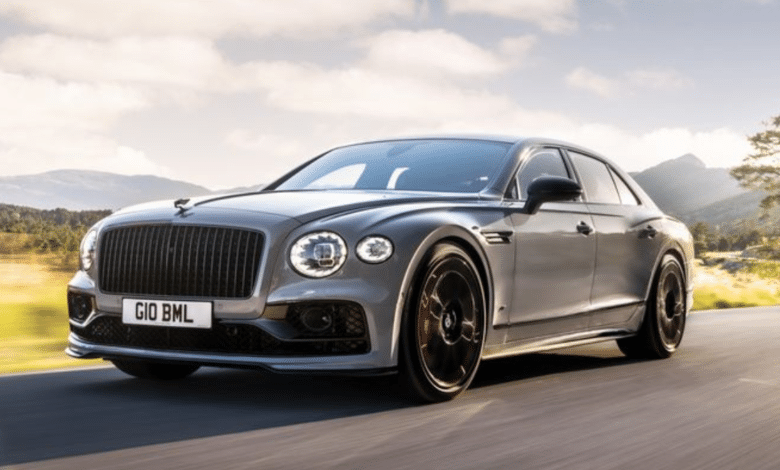Bentley Flying Spur 2023: review
Read More »Bentley
About Bentley

Since its establishment in 1919, Bentley has been associated with extensive, swift, and costly automobiles. That’s partly because the British automaker’s first ten years produced a lasting impression on the automobile industry.
The Bentley Motor Company was established in 1919 by Walter Owen (“W.O.”) Bentley. The company’s earliest vehicles were large, imposing sports cars that encapsulated the founder’s expertise as an engineer repairing everything from locomotives to taxicabs to sports cars.
The first Bentley 3 Litre was a sports vehicle, although it was much bigger than the spindly French sports cars that dominated racing at the time (Bugatti being the most well-known example). It could be as sumptuous as a limousine without sacrificing speed, was as tough as a fire engine, and won the 1924 24 Hours of Le Mans, which further raised its notoriety and fan base among wealthy racing playboys.
The most noteworthy of them was Captain Woolf Barnato, who acquired his first 3 Litre in 1925 and quickly gave the underfunded business financial support. With the addition of Barnato’s W.O., the range of vehicles was enlarged to include the 4+12 liter, Supercharged 4+12 liter “Blower,” 6+12 liter, Speed Six, 8-liter, and 4-liter versions. Consequently, the “Bentley Boys” group won four consecutive Le Mans wins from 1927 to 1930, solidifying the mythology of the vehicles.
The 1929 stock market collapse and the Great Depression completely decimated the demand for such vehicles, especially the pricey 8-liter limo, and led the business into bankruptcy. In contrast to W.O.’s preference to sell to competitor Napier, Rolls-Royce acquired the company via a shadow buyer in late 1931. Roll-Royce’s plant in Derby took up production duties from the original location in Cricklewood in North London. W.O. disliked this arrangement and quit the business in 1935.
The “Derby Bentley” series of automobiles was created as a more compact, swifter, and lighter alternative to Rolls-Royce’s models. The Derby wasn’t a racer, but it did well on the market given the times, and fresh iterations of the Derby continued to be released until World War II in 1939.
After World War II, the U.K. experienced severe economic hardship, prompting Bentley to release the Mk VI, the company’s first vehicle with a factory body (all prior models had coachwork completed by private companies like Mulliner, Freestone & Webb, or Vanden Plas). Even though it was less expensive and smaller than earlier versions, the Mk IV was a major success and gave rise to the Silver Dawn, a Rolls-Royce derivative, relatively fast. Both were created at a single location in Crewe, located around 40 miles south of Liverpool.
Bentley continued to produce unique and fast cars, most notably the Continental coupe, which was produced from 1954 to 1965 and went through four iterations: the R-Type, S1, S2, and S3. After these two models’ success, Bentleys would become much more similar to Rolls-Royce designs for many years afterward.
Bentley’s popularity declined in the 1960s and 1970s due to its designs, notably, the 1965–1980 T-Series, being too similar to the Rolls-Royce brothers. Due to financial difficulties at the parent business, which produced aerospace engines, Rolls-Royce Motor Cars and Bentley Motors were sold to Vickers, another aerospace firm, in 1970.
The Mulsanne, closely based on the Rolls-Royce Silver Spur but had a noticeably more sporty character, replaced the T-Series at the beginning of the 1980s. The Mulsanne Turbo and the Turbo R followed this, re-establishing Bentley’s reputation as a manufacturer of respectable supersedans.
The Continental returned in 1991 as a brand-new coupe model without a Rolls-Royce sister and later received a convertible model. The Continental R, which the R-Type inspired in the 1950s, contributed to Bentley’s resurgence in popularity.
Vickers revealed its intention to sell Rolls-Royce and Bentley at the end of 1997, sparking a bidding battle between BMW and Volkswagen for the combined businesses. When everything was said and done, Volkswagen had acquired the Crewe plant and the Bentley name, while BMW had acquired the Rolls-Royce trademarks—the most prosperous era in Bentley’s history since the 1920s started at this point.
Volkswagen renovated Crewe and created new models, beginning with the Continental G.T. in 2003, costing around $2 billion. The model was a massive success for Bentley and was quickly followed by the four-door Flying Spur. It was an advanced, all-wheel drive, twin-turbo W12-powered rendition of the earlier Continentals. By 2006, manufacturing of the two vehicles had increased by 820% to reach more than 9,000 vehicles annually, by far the most significant levels in the firm’s history.
In 2023, Continental and Flying Spur sales are still quite substantial because of Bentlectory. The Bentayga, the company’s first SUV, was unveiled in 2016 and rapidly became another smash hit, accounting for 40% or more of sales. It debuted the long-wheelbase Bentayga EWB in 2023 to replace the venerable Mulsanne limousine.
Despite being renowned for its powerful gas engines, the business debuted several plug-in hybrid vehicles in the early 2020s. It has ambitions to switch to all-electric cars by 2030.
The Bentley Bentayga SUV’s EWB version raises the bar for rear-seat luxury. Extended Base, also known as EWB, refers to…
Read More »

